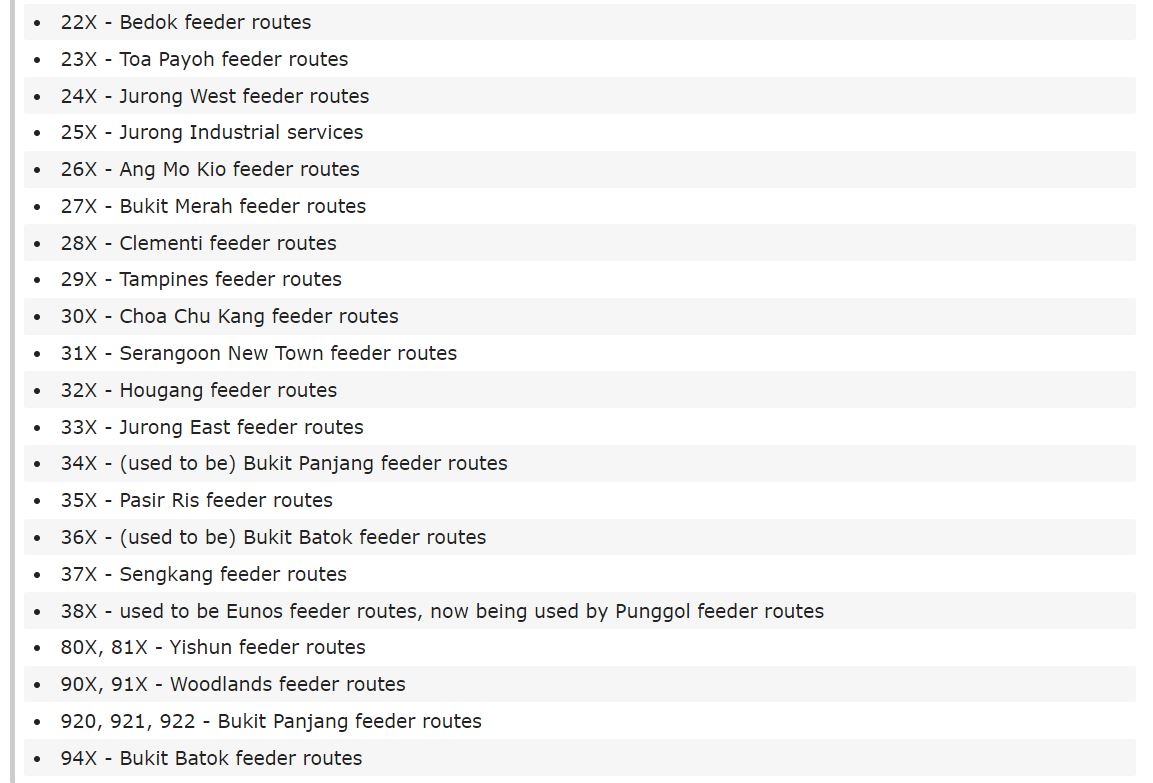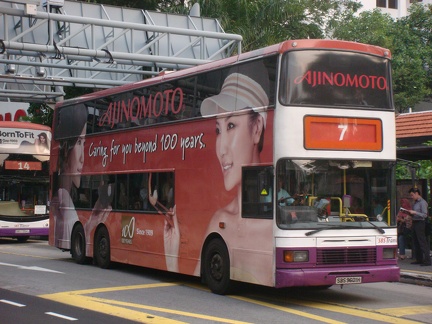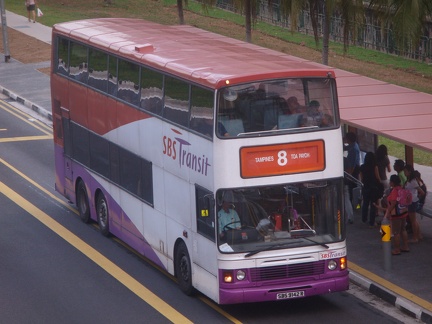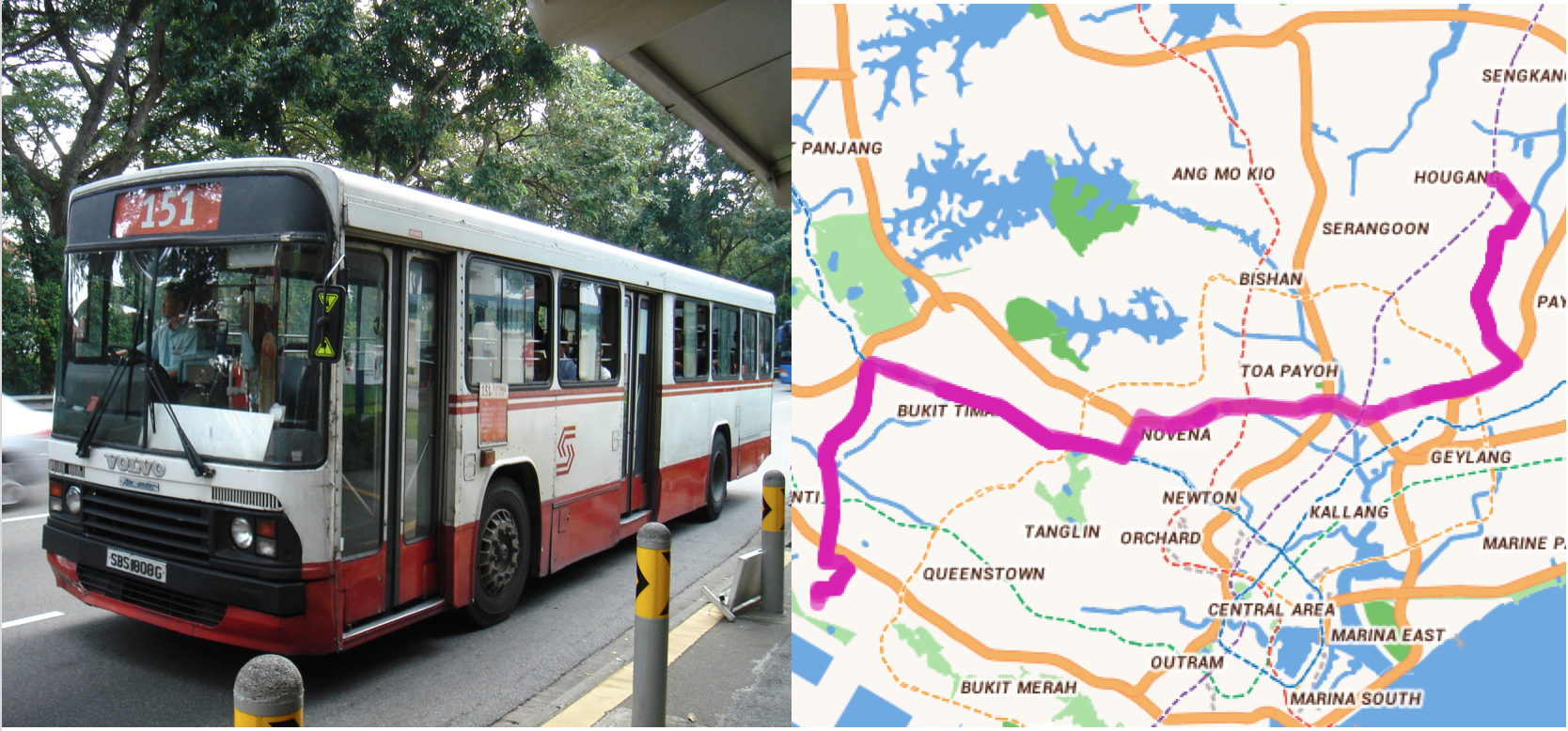Before the MRT system came along, Singapore relied on an all-bus public transportation system.
And presently, our bus system still forms a major part of our public transportation system, especially when the MRT breaks down.
The number of bus services in Singapore has grown exponentially over the years from only 130 bus routes in 1971.
[caption id="" align="aligncenter" width="500"] Image via SBS Transit[/caption]
Image via SBS Transit[/caption]
Buses have come a long way to connect Singaporeans to different places across the island, and we are all aware that the respective bus routes are identified by numbers.
However, have you ever wondered how bus service numbers are decided and assigned?
Types of buses
There are two main types of bus services in Singapore: Trunk and feeder buses. Apart from these, there are several other special services, such as the night or express services.
Trunk buses are the main form of bus services. They provide daily bus connections across the island with a vast network of routes, connecting different towns and estates. Trunk bus numbers are usually assigned either two- or three-digit numbers.
[caption id="" align="aligncenter" width="711"] The 30 service is a trunk route between Boon Lay and Bedok. Image via Youtube.[/caption]
The 30 service is a trunk route between Boon Lay and Bedok. Image via Youtube.[/caption]
Feeder buses provide localised bus connections within a single residential town and they have three-digit numbers.
[caption id="" align="aligncenter" width="714"] Feeder service 298. Image via Youtube[/caption]
Feeder service 298. Image via Youtube[/caption]
The night services are overnight services that only start operation after midnight. Its number is denoted by an "NR" in front of the number or an "N" behind the number.
[caption id="" align="aligncenter" width="733"] Image via Youtube[/caption]
Image via Youtube[/caption]
[caption id="" align="aligncenter" width="432"] Service 5N. Image via sgbuses.com[/caption]
Express bus services tend to start with 50x, or end with "e" for existing routes which skip certain bus stops.
[caption id="" align="aligncenter" width="432"] Express 502. Image via sgbuses.com[/caption]
[related_story]
Different bus companies
In 1983, Trans-Island Bus Services (TIBS) started as the second bus operator in Singapore .
To differentiate themselves from Singapore Bus Service (SBS, now known as SBS Transit) at that time, TIBS bus services had 800s and 900s numbers.
[caption id="" align="aligncenter" width="770"] Source: Wikipedia[/caption]
Even though TIBS was eventually merged with SMRT, the service numbers still remain today.
Currently, bus service numbers are not decided by the bus company.
According to the bus contracting model, the Land Transport Authority (LTA) determines the bus services to be provided and bus operators will bid for the right to operate these services.
Planned according to towns?
One Reddit user pointed out that there are some patterns to bus service numbers and general location that can still be observed today:
"For example, the 60 series were assigned to routes originating from MacPherson Estate, the 90 series were assigned to routes heading to Paya Lebar Airport, the 13X to 15X series were assigned to routes originating from Toa Payoh, and the 17X to 18X series were assigned to routes originating from the whole Jurong area (which is now the new towns of Bukit Batok, Jurong East and Boon Lay)."
 Screenshot of Reddit user despicablevegetable
Screenshot of Reddit user despicablevegetable
This user also pointed out a trend for feeder buses:
 Screenshot of Reddit user despicablevegetable. Note: Service 921 has been integrated with services 700 and 700A.
Screenshot of Reddit user despicablevegetable. Note: Service 921 has been integrated with services 700 and 700A.
There was also an explanation offered for the trends in feeder bus services.
Towns that were established during the 1970s and 1980s, such as Bedok and Toa Payoh, had feeder bus services with smaller numbers. Newer towns which came after had larger numbers.
 7 serves between Bedok and Clementi. Image via sgbuses.com
7 serves between Bedok and Clementi. Image via sgbuses.com
 8 serves Toa Payoh and Tampines. Image via sgbuses.com
8 serves Toa Payoh and Tampines. Image via sgbuses.com
Pattern may not always apply
However, these patterns may not apply to all bus services today.
In the 1980s to 1990s, with the development of the North-South and East-West MRT lines, there were large-scale amendments in bus routes to avoid duplication. Even more amendments took place as other MRT lines were created over the years.
With changes in Singapore roads and MRT networks, certain bus services were withdrawn, others were cut short and some were heavily modified.
Additionally, more bus services were also added with the Bus Service Enhancement Programme. These service numbers would be dependent on available numbers and hence, may not fit into the broad patterns.
For instance, service 134 and 137 was introduced in 2016 and 2017 respectively, serving the Paya Lebar area instead of Ang Mo Kio (as the broad pattern of 13x buses would suggest).
Now you know.
Top photo composite image from Wikimedia and screengrab from Mytransport.sg
If you like what you read, follow us on Facebook, Instagram, Twitter and Telegram to get the latest updates.

